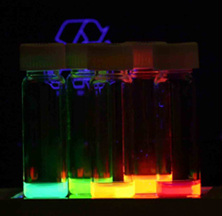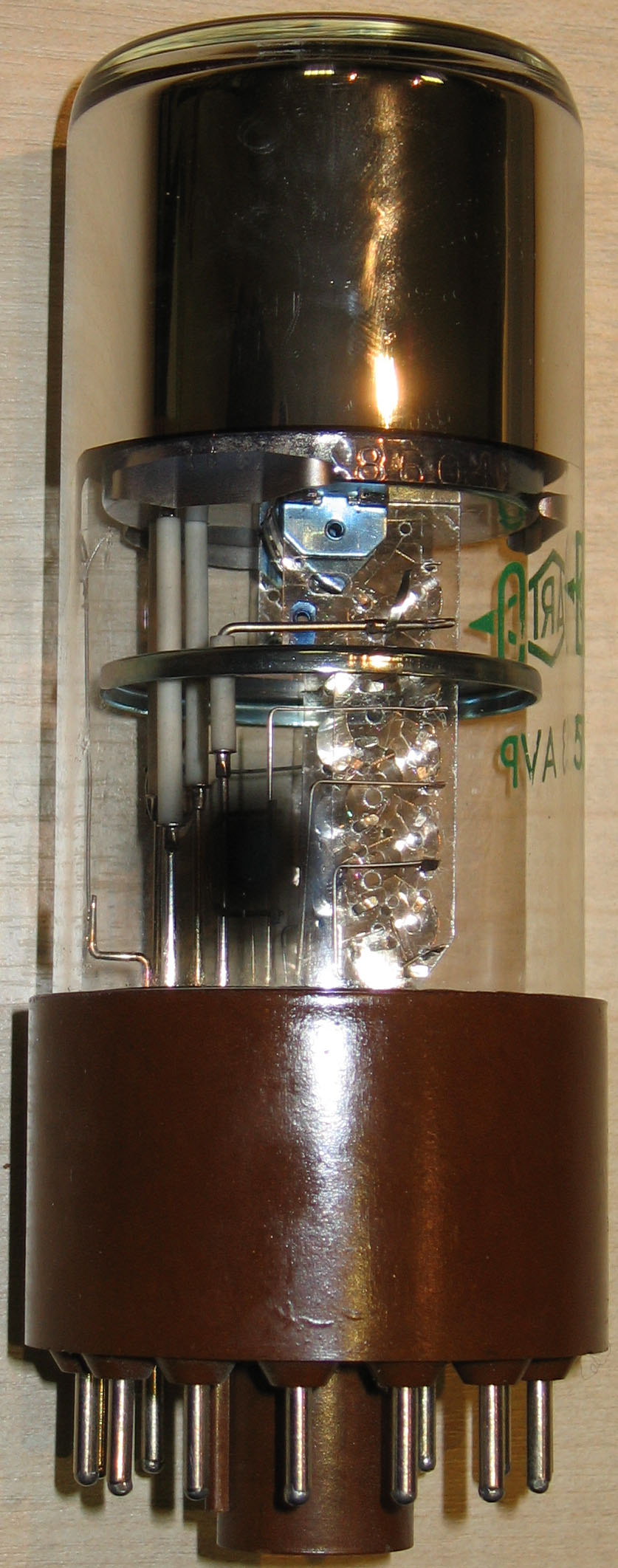|
Quantum Sensing
Within quantum technology, a quantum sensor utilizes properties of quantum mechanics, such as quantum entanglement, quantum interference, and quantum state squeezing, which have optimized precision and beat current limits in sensor technology. The field of quantum sensing deals with the design and engineering of quantum sources (e.g., entangled) and quantum measurements that are able to beat the performance of any classical strategy in a number of technological applications. This can be done with photonic systems or solid state systems. Characteristics In photonics and quantum optics, photonic quantum sensing leverages entanglement, single photons and squeezed states to perform extremely precise measurements. Optical sensing makes use of continuously variable quantum systems such as different degrees of freedom of the electromagnetic field, vibrational modes of solids, and Bose–Einstein condensates. These quantum systems can be probed to characterize an unknown transform ... [...More Info...] [...Related Items...] OR: [Wikipedia] [Google] [Baidu] [Amazon] |
Quantum Technology
Quantum engineering is the development of technology that capitalizes on the laws of quantum mechanics. This type of engineering uses quantum mechanics to develop technologies such as quantum sensors and quantum computers. Devices that rely on quantum mechanical effects such as lasers, MRI imagers and transistors have revolutionized many areas of technology. New technologies are being developed that rely on phenomena such as quantum coherence and on progress achieved in the last century in understanding and controlling atomic-scale systems. Quantum mechanical effects are used as a resource in novel technologies with far-reaching applications, including quantum sensors and novel imaging techniques, secure communication ( quantum internet) and quantum computing. History The field of quantum technology was explored in a 1997 book by Gerard J. Milburn. It was then followed by a 2003 article by Milburn and Jonathan P. Dowling, and a separate publication by David Deutsch on the sa ... [...More Info...] [...Related Items...] OR: [Wikipedia] [Google] [Baidu] [Amazon] |
Energy Level
A quantum mechanics, quantum mechanical system or particle that is bound state, bound—that is, confined spatially—can only take on certain discrete values of energy, called energy levels. This contrasts with classical mechanics, classical particles, which can have any amount of energy. The term is commonly used for the energy levels of the electrons in atoms, ions, or molecules, which are bound by the electric field of the atomic nucleus, nucleus, but can also refer to energy levels of nuclei or molecular vibration, vibrational or rotational energy levels in molecules. The energy spectrum of a system with such discrete energy levels is said to be Quantization (physics), quantized. In chemistry and atomic physics, an electron shell, or principal energy level, may be thought of as the orbit of one or more electrons around an atom's atomic nucleus, nucleus. The closest shell to the nucleus is called the "1 shell" (also called "K shell"), followed by the "2 shell" (or "L shell"), ... [...More Info...] [...Related Items...] OR: [Wikipedia] [Google] [Baidu] [Amazon] |
Quantum Imaging
Quantum imaging is a new sub-field of quantum optics that exploits quantum correlations such as quantum entanglement of the electromagnetic field in order to image objects with a resolution or other imaging criteria that is beyond what is possible in classical optics. Examples of quantum imaging are quantum ghost imaging, quantum lithography, imaging with undetected photons, sub-shot-noise imaging, and quantum sensing. Quantum imaging may someday be useful for storing patterns of data in quantum computers and transmitting large amounts of highly secure encrypted information. Quantum mechanics has shown that light has inherent "uncertainties" in its features, manifested as moment-to-moment fluctuations in its properties. Controlling these fluctuations—which represent a sort of "noise"—can improve detection of faint objects, produce better amplified images, and allow workers to more accurately position laser beams. Quantum imaging methods Quantum imaging can be done in diff ... [...More Info...] [...Related Items...] OR: [Wikipedia] [Google] [Baidu] [Amazon] |
Quantum Metrology
Quantum metrology is the study of making high-resolution and highly sensitive measurements of physical parameters using quantum theory to describe the physical systems, particularly exploiting quantum entanglement and quantum Squeezed coherent state, squeezing. This field promises to develop measurement techniques that give better precision than the same measurement performed in a classical framework. Together with quantum hypothesis testing, it represents an important theoretical model at the basis of quantum sensing. Mathematical foundations A basic task of quantum metrology is estimating the parameter \theta of the unitary dynamics : \varrho(\theta)=\exp(-iH\theta)\varrho_0\exp(+iH\theta), where \varrho_0 is the initial state of the system and H is the Hamiltonian of the system. \theta is estimated based on measurements on \varrho(\theta). Typically, the system is composed of many particles, and the Hamiltonian is a sum of single-particle terms : H=\sum_k H_k, where H_k ... [...More Info...] [...Related Items...] OR: [Wikipedia] [Google] [Baidu] [Amazon] |
Defense Advanced Research Projects Agency
The Defense Advanced Research Projects Agency (DARPA) is a research and development agency of the United States Department of Defense responsible for the development of emerging technologies for use by the military. Originally known as the Advanced Research Projects Agency (ARPA), the agency was created on February 7, 1958, by President Dwight D. Eisenhower in response to the Soviet launching of Sputnik 1 in 1957. By collaborating with academia, industry, and government partners, DARPA formulates and executes research and development projects to expand the frontiers of technology and science, often beyond immediate U.S. military requirements.Dwight D. Eisenhower and Science & Technology, (2008). Dwight D. Eisenhower Memorial CommissionSource The name of the organization first changed from its founding name, ARPA, to DARPA, in March 1972, changing back to ARPA in February 1993, then reverted to DARPA in March 1996. ''The Economist'' has called DARPA "the agency that shaped the ... [...More Info...] [...Related Items...] OR: [Wikipedia] [Google] [Baidu] [Amazon] |
Silicon
Silicon is a chemical element; it has symbol Si and atomic number 14. It is a hard, brittle crystalline solid with a blue-grey metallic lustre, and is a tetravalent metalloid (sometimes considered a non-metal) and semiconductor. It is a member of group 14 in the periodic table: carbon is above it; and germanium, tin, lead, and flerovium are below it. It is relatively unreactive. Silicon is a significant element that is essential for several physiological and metabolic processes in plants. Silicon is widely regarded as the predominant semiconductor material due to its versatile applications in various electrical devices such as transistors, solar cells, integrated circuits, and others. These may be due to its significant band gap, expansive optical transmission range, extensive absorption spectrum, surface roughening, and effective anti-reflection coating. Because of its high chemical affinity for oxygen, it was not until 1823 that Jöns Jakob Berzelius was first able to p ... [...More Info...] [...Related Items...] OR: [Wikipedia] [Google] [Baidu] [Amazon] |
Photomultiplier Tube
Photomultiplier tubes (photomultipliers or PMTs for short) are extremely sensitive detectors of light in the ultraviolet, visible light, visible, and near-infrared ranges of the electromagnetic spectrum. They are members of the class of vacuum tubes, more specifically vacuum phototubes. These detectors multiply the current produced by incident light by as much as 100 million times or 108 (i.e., 160 decibel, dB),Decibels are power ratios. Power is proportional to I2 (current squared). Thus a current gain of 108 produces a power gain of 1016, or 160 decibel, dB in multiple dynode stages, enabling (for example) individual photons to be detected when the incident flux of light is low. The combination of high Gain (electronics), gain, low Noise (electronics), noise, high frequency response or, equivalently, ultra-fast response, and large area of collection has maintained photomultipliers an essential place in Spectroscopy, low light level spectroscopy, confocal microscopy, Raman spec ... [...More Info...] [...Related Items...] OR: [Wikipedia] [Google] [Baidu] [Amazon] |
Photon
A photon () is an elementary particle that is a quantum of the electromagnetic field, including electromagnetic radiation such as light and radio waves, and the force carrier for the electromagnetic force. Photons are massless particles that can move no faster than the speed of light measured in vacuum. The photon belongs to the class of boson particles. As with other elementary particles, photons are best explained by quantum mechanics and exhibit wave–particle duality, their behavior featuring properties of both waves and particles. The modern photon concept originated during the first two decades of the 20th century with the work of Albert Einstein, who built upon the research of Max Planck. While Planck was trying to explain how matter and electromagnetic radiation could be in thermal equilibrium with one another, he proposed that the energy stored within a material object should be regarded as composed of an integer number of discrete, equal-sized parts. To explain the pho ... [...More Info...] [...Related Items...] OR: [Wikipedia] [Google] [Baidu] [Amazon] |
Avalanche Photodiode
An avalanche photodiode (APD) is a highly sensitive type of photodiode, which in general are semiconductor diodes that convert light into electricity via the photovoltaic effect. APDs use materials and a structure optimised for operating with high reverse bias voltage, approaching the reverse breakdown voltage, such that charge carriers generated by the photovoltaic effect are multiplied by an avalanche breakdown; thus they can be used to detect relatively small amounts of light. From a functional standpoint, they can be regarded as the semiconductor analog of photomultiplier tubes; unlike solar cells, they are not optimised for ''generating'' electricity from light but rather for ''detection'' of incoming photons. Typical applications for APDs are laser rangefinders, long-range Optical fiber, fiber-optic telecommunication, positron emission tomography, and particle physics. History The avalanche photodiode was invented by Japanese engineer Jun-ichi Nishizawa in 1952. However, stu ... [...More Info...] [...Related Items...] OR: [Wikipedia] [Google] [Baidu] [Amazon] |
Superposition Principle
The superposition principle, also known as superposition property, states that, for all linear systems, the net response caused by two or more stimuli is the sum of the responses that would have been caused by each stimulus individually. So that if input ''A'' produces response ''X'', and input ''B'' produces response ''Y'', then input (''A'' + ''B'') produces response (''X'' + ''Y''). A function F(x) that satisfies the superposition principle is called a linear function. Superposition can be defined by two simpler properties: additivity F(x_1 + x_2) = F(x_1) + F(x_2) and homogeneity F(ax) = a F(x) for scalar . This principle has many applications in physics and engineering because many physical systems can be modeled as linear systems. For example, a beam can be modeled as a linear system where the input stimulus is the load on the beam and the output response is the deflection of the beam. The importance of linear systems is that they are easier to analyze mathemat ... [...More Info...] [...Related Items...] OR: [Wikipedia] [Google] [Baidu] [Amazon] |
Nuclear Magnetic Resonance
Nuclear magnetic resonance (NMR) is a physical phenomenon in which nuclei in a strong constant magnetic field are disturbed by a weak oscillating magnetic field (in the near field) and respond by producing an electromagnetic signal with a frequency characteristic of the magnetic field at the nucleus. This process occurs near resonance, when the oscillation frequency matches the intrinsic frequency of the nuclei, which depends on the strength of the static magnetic field, the chemical environment, and the magnetic properties of the isotope involved; in practical applications with static magnetic fields up to ca. 20 tesla, the frequency is similar to VHF and UHF television broadcasts (60–1000 MHz). NMR results from specific magnetic properties of certain atomic nuclei. High-resolution nuclear magnetic resonance spectroscopy is widely used to determine the structure of organic molecules in solution and study molecular physics and crystals as well as non-crysta ... [...More Info...] [...Related Items...] OR: [Wikipedia] [Google] [Baidu] [Amazon] |
SQUID
A squid (: squid) is a mollusc with an elongated soft body, large eyes, eight cephalopod limb, arms, and two tentacles in the orders Myopsida, Oegopsida, and Bathyteuthida (though many other molluscs within the broader Neocoleoidea are also called ''squid'' despite not strictly fitting these criteria). Like all other cephalopods, squid have a distinct head, Symmetry (biology)#Bilateral symmetry, bilateral symmetry, and a mantle (mollusc), mantle. They are mainly soft-bodied, like octopuses, but have a small internal skeleton in the form of a rod-like gladius (cephalopod), gladius or pen, made of chitin. Squid diverged from other cephalopods during the Jurassic and occupy a similar Ecological niche, role to teleost fish as open-water predators of similar size and behaviour. They play an important role in the open-water food web. The two long tentacles are used to grab prey and the eight arms to hold and control it. The beak then cuts the food into suitable size chunks for swal ... [...More Info...] [...Related Items...] OR: [Wikipedia] [Google] [Baidu] [Amazon] |





